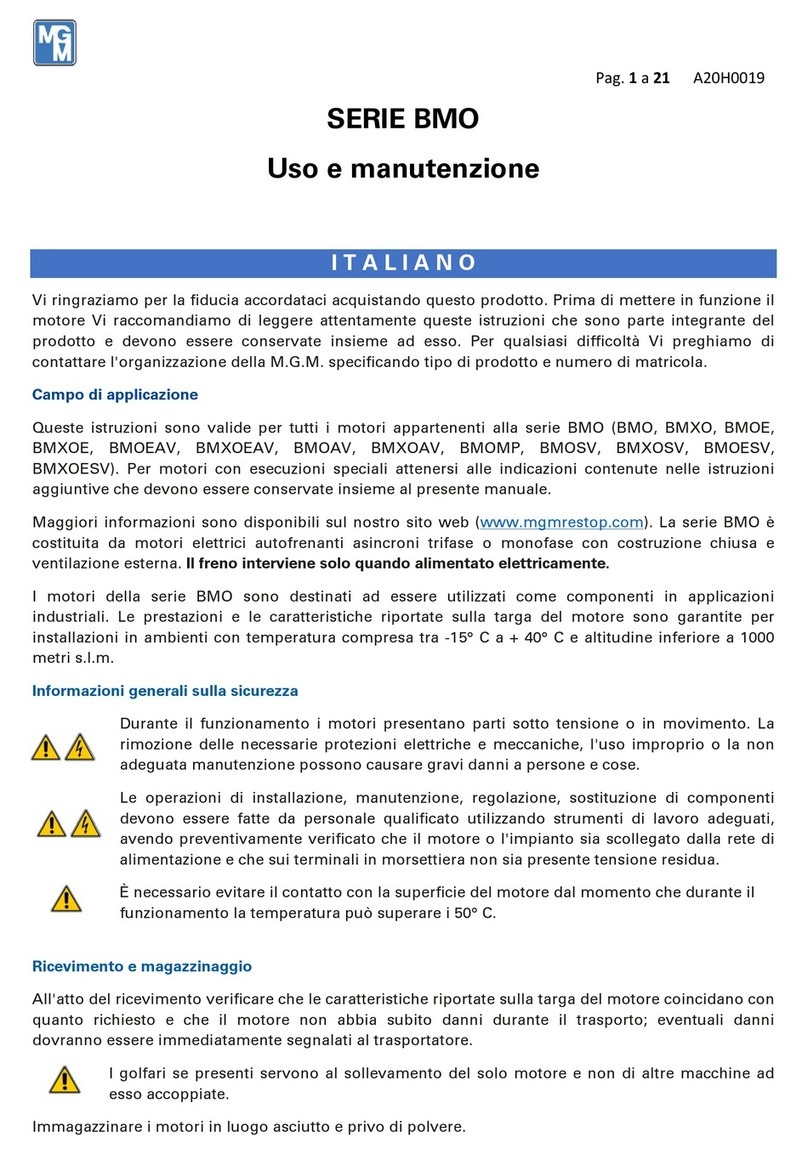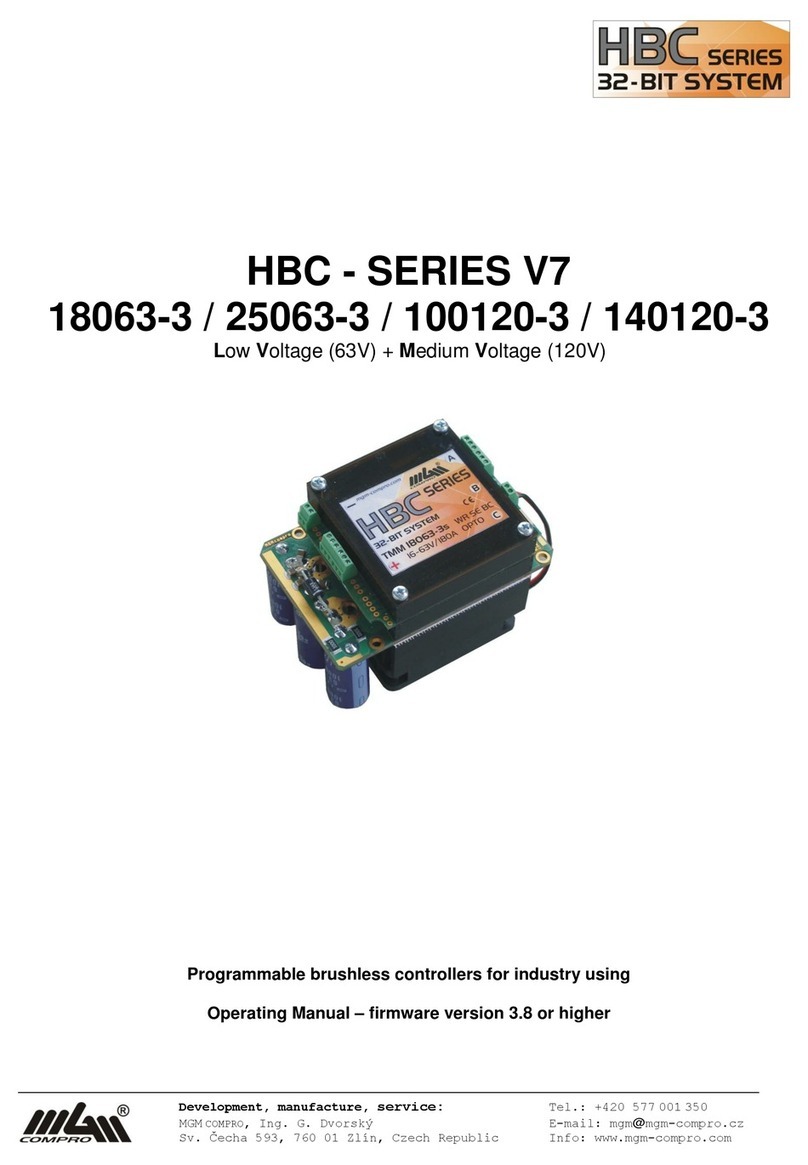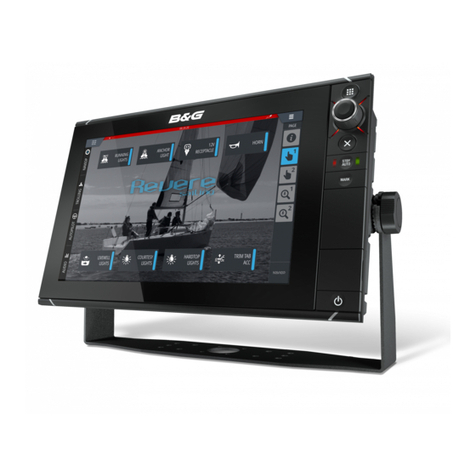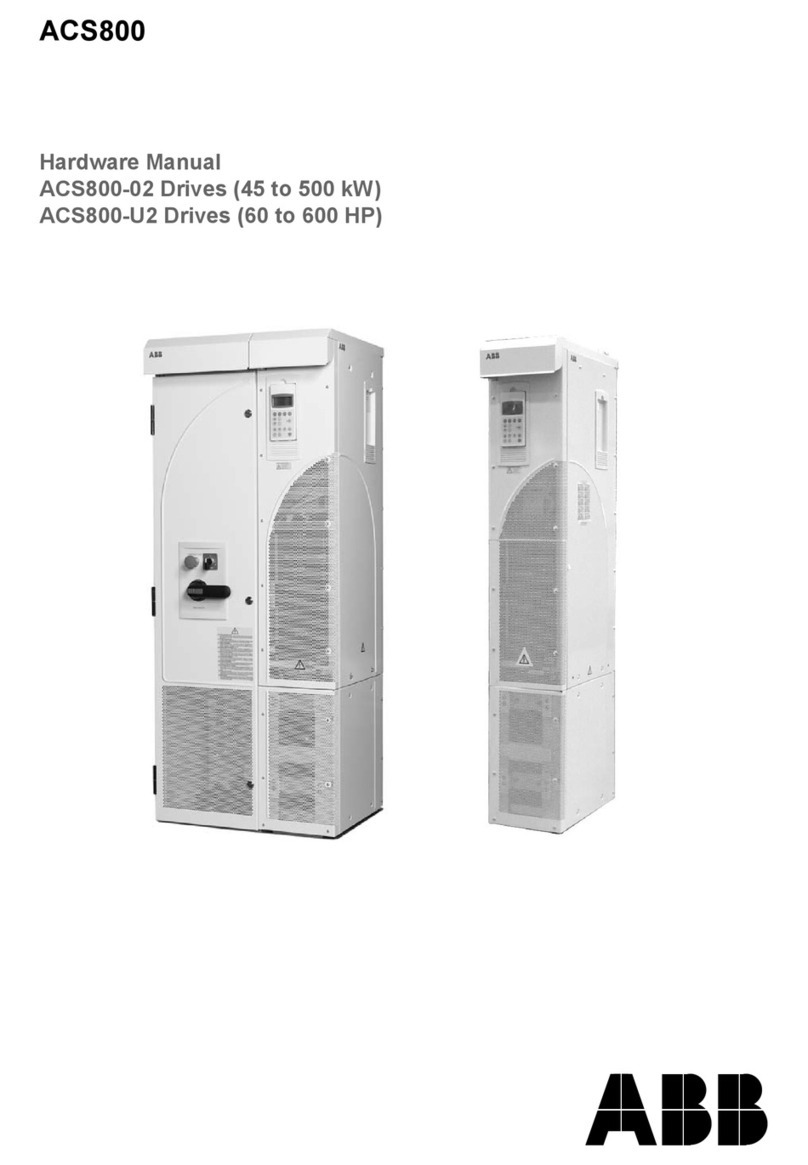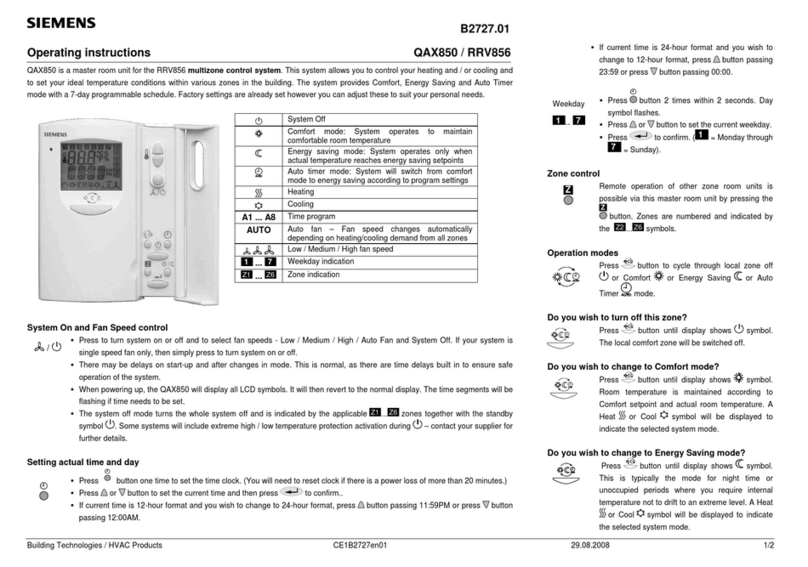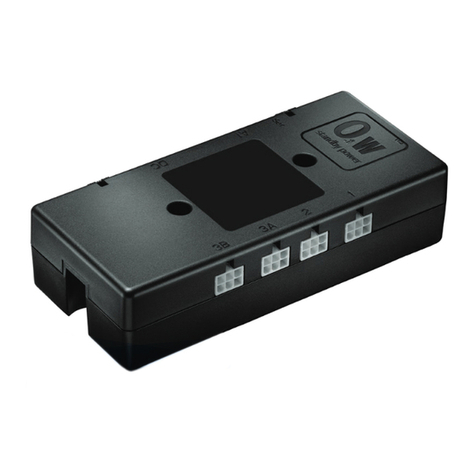MGM BMS 16i User manual

BMS 16i
Version 5.4
Battery Management System
Operating manual
Development, manufacture, service: Tel.: +420 577
001
350
MGM COMPRO s.r.o. E-mail: info@mgm-compro.com
Růžová 307, 763 02 Zlín, Czech Republic Info: www.mgm-compro.com

BMS-16i page 2 / 38
Table of content
BMS-16i ..................................................................................................................................................................................................................................3
Dictionary...............................................................................................................................................................................................................................3
Parameters.............................................................................................................................................................................................................................4
Warnings and recommendations ........................................................................................................................................................................................5
Basic variants of assembly..................................................................................................................................................................................................6
According to controlling......................................................................................................................................................................................................................6
Master..........................................................................................................................................................................................................................................6
Slave ............................................................................................................................................................................................................................................6
According to balancing........................................................................................................................................................................................................................6
Balancing with the HCBAL8 and with FANs...............................................................................................................................................................................6
Balancing with the HCBAL8 .......................................................................................................................................................................................................6
Balancing with the internal balancing resistors.............................................................................................................................................................................6
Connectors and signals .......................................................................................................................................................................................................7
LED indication of the BMS working modes .......................................................................................................................................................................9
Activation of the BMS 16i.....................................................................................................................................................................................................9
Charging and balancing .......................................................................................................................................................................................................9
Balancing modes .................................................................................................................................................................................................................................9
From balancing voltage................................................................................................................................................................................................................9
From charged cell voltage -10 mV ...............................................................................................................................................................................................9
Always.........................................................................................................................................................................................................................................9
Deactivated ..................................................................................................................................................................................................................................9
Example of the charging modes with different chargers / types of battery cells..........................................................................................................................10
Internal battery resistance .................................................................................................................................................................................................11
Discharging..........................................................................................................................................................................................................................11
Current probe (Internal / External) ....................................................................................................................................................................................12
Internal current probe / Connector K4 ...............................................................................................................................................................................................12
External current probe .......................................................................................................................................................................................................................12
Temperature sensors..........................................................................................................................................................................................................13
Temperature sensor of BMS..............................................................................................................................................................................................................13
Temperature sensor of balancers........................................................................................................................................................................................................13
Temperature sensor of environment...................................................................................................................................................................................................13
Temperature sensor of battery............................................................................................................................................................................................................13
System bus RS485..............................................................................................................................................................................................................13
Communication bus CAN 2.0.............................................................................................................................................................................................14
Example of NMEA connectors & termination ...................................................................................................................................................................................14
Power outputs .....................................................................................................................................................................................................................15
OUT_1 →Switching of the main contactor (without / with external supply).....................................................................................................................................15
OUT_2 →Switching of the charger contactor (without / with external supply).................................................................................................................................15
OUT_3 →Charging ..........................................................................................................................................................................................................................16
OUT_4 →Charging with high current (without / with external supply) ............................................................................................................................................16
HBC Controller / Motor / Battery system / Display / Battery chargers..........................................................................................................................16
Communication interface OPTOCOM6i (BMS 16i ↔ PC)................................................................................................................................................17
MGM ProTool.......................................................................................................................................................................................................................18
Instalation of the MGM ProTool........................................................................................................................................................................................................18
Connection of the BMS 16i with PC..................................................................................................................................................................................................19
Update of MGM ProTool ..................................................................................................................................................................................................................19
Update of BMS 16i firmware.............................................................................................................................................................................................................20
Setting of the user parameters (in MGM ProTool)...........................................................................................................................................................21
List of parameters..............................................................................................................................................................................................................................22
Description of parameters..................................................................................................................................................................................................................23
Real-time monitoring ..........................................................................................................................................................................................................26
Parameters, which can be monitored..................................................................................................................................................................................................28
GSM module ........................................................................................................................................................................................................................29
BMS 16i - Logs overview....................................................................................................................................................................................................31
Examples..............................................................................................................................................................................................................................32
1) BMS 16i Master ....................................................................................................................................................................................................................32
2) BMS 16i Master + Slave........................................................................................................................................................................................................34
Product warranty.................................................................................................................................................................................................................36
Service and Technical Support .........................................................................................................................................................................................36
Appendix..............................................................................................................................................................................................................................37
CAN bus default settings ...................................................................................................................................................................................................................37

BMS-16i page 3 / 38
BMS-16i
BMS 16i is the Battery Management System designed for batteries, which use LiPol, Li-Ion, LiFePO4 cells or other cells with
operational voltage range 1,8V - 5V per cell. BMS 16i provides protection and enlarge the lifetime of the batteries by measuring the
working temperatures (of battery, BMS and balancers) and capacity of the battery and controlling the voltage and flowed current.
BMS 16i control the battery during the charging and discharging, manage the balancing of each cell, communicate with superior
system and handle a system relay and contactors.
BMS 16i is able to control max. 16 cells, but could be connected into the larger system thru the internal bus (RS485), where could be
max. 8× BMS 16i modules (1× Master / 7× Slaves), which could control up to 128 serial connected cells with max. battery voltage 540
V. In the system you could use the BMS 16i and BMS-8i to be able to optimize the amount of the BMS modules for defined amount of
the cells. BMS 16i uses balancing current up to 850 mA (version with assembled additional HCBAL8 and FANs), basic version could
use balancing current up to 100 mA.
BMS 16i is powered directly from the monitored battery and works independently. BMS 16i has very low power consumption around
20uA in the “OFF” mode.
BMS 16i system automatically do the self-testing, has doubled critical components for balancing, to secure, that even if any
component wills failure, then the cells will be protected against the uncontrolled discharging and the system will still correctly works,
inform about the failure (via LED status, inform superior system via CAN, inform via display) and ask for the service .
BMS 16i has, of course as well as all other BMSes from MGM Compro, unique measurement of internal voltage of cells, which is fully
independent to the internal resistance of the cells and resistant of the system.
With SW application MGM-ProTool and communication interface OPTOCOM-6i is possible to do the settings, real time monitoring
and read logs of the system and FW update of the BMS, which helps to have every time the latest version of the SW/FW.
For communication with other systems, BMS-16i uses the CAN bus.
BMS 16i could be modified based on the customer request. In case, that you have any extra requirements, feel free to contact us by
an email: info@mgm-compro.com
Dictionary
BMS 16i system More than one BMS 16i connected together
HCBAL8 PCBA with extra balancing resistors, which allows to use higher balancing currents
CAN Bus for communication with other systems
RS485 Bus for internal communication with different BMS 16i and charger
OPTOCOM-6i HW interface for connection of BMS 16i and PC (USB)
MGM ProTool PC software application for setting parameters of BMS and real-time monitoring
ESC Electric speed controller
Superior system “Higher”system, which could control the BMS system, controllers and other devices
FAN Air cooler, placed on the HCBAL8
PCBA Printed Circuit Board Assembly
N/A Not applicable
CC/CV charger Constant current / constant voltage charger

BMS-16i page 4 / 38
Parameters
Number of cells per one BMS 16i 4 ÷ 16
Max. number of the chained boards 8
Max. number of the cells in BMS 16i system 128
Max. voltage of battery connected to one BMS 16i 68V
Voltage working range per cell 1,8 ÷ 5V
Recommended capacity of the battery up to 655 Ah
Power supply of BMS 16i From monitored battery
Power consumption of the BMS 16i in “ON” mode ~ 20 mA
Power consumption of the BMS 16i in “OFF” mode ~ 20 µA
Balancing current with internal balancing resistors ≤ 100mA *)
Balancing current with balancing PCBAs (HCBAL8) ≤ 850mA **)
2× FAN Max. 12V/350mA
Controlled by BMS 16i according to temperatures and balancing state
Communication interface CAN 2.0 –Communication bus
RS485 –Internal communication bus
PC interface (thru USB) OPTOCOM-6i (+MGM ProTool)
BMS 16i compatibility BMS 16i is compatible with BMS 8i
Weight of BMS 16i 82 g
Weight of BMS 16i with HCBAL8s and FANs 305 g
Dimensions (L × H × W) 140 × 95 × 15 mm
Dimensions (L × H × W) with HCBAL8s and FANs 140 × 95 × 46 mm
Ambient conditions -20 up to +50 °C
*) Depending on the conditions of BMS surroundings
**) With HCBAL8s and FANs, depending on the conditions of BMS surroundings

BMS-16i page 5 / 38
Warnings and recommendations
•HAZARD OF ELECTRIC SHOCK, EXPLOSION, OR ARC FLASH. The device might
operate with higher voltage. Safe electrical installation should be carried out only by skilled
professionals (authorized persons).
•Secure correct connections of battery poles (reversal of battery/cells poles will destroy the
BMS 16i, the damage may not be visible immediately, but after some runs).
•Connections must follow the user manual.
•Is recommended to cool the BMS 16i in operation with flowing air. Do not obstruct the
access of cooling airflow to the BMS 16i.
•Never connect more cells (higher voltage) or other cells, than is specified in technical
documentation.
•Is recommended to do wiring of the system at first, after correct connection of the
system, connect traction batteries.

BMS-16i page 6 / 38
Basic variants of assembly
According to controlling
Master
Controlling module of the system. Master module includes all measuring, communicating and controlling interfaces and
powers the system bus (RS485). As standalone (without any other connected slaves) could balance maximum 16 cells.
oRealizes measuring and balancing of all connected cells of the battery
oMeasures and control the voltage, flowed current, working temperatures (of battery, BMS and balancers) and
capacity of the battery
oIncludes file with all measured data from the system, which are available thru the MGM ProTool
oIs active based on the status of the ON/OFF switch (connected to K5)
oActivates the other BMSes (Slaves) in the system and communicate & control them (via RS485)
oCommunicates with the parent system, controller, display (via CAN bus)
oControls the connected charger
oHas to have system address 0 (visible in PC software MGM ProTool –parameter P11)
oHas to be connected on the “lowest” cells of the battery
oCould be used as standalone (for max. 16 cells) as well as master for the whole BMS system (1 master + max. 7
Slaves)
Slave
Measuring modules in the system. Slave modules include interface for only measuring and balancing of cells and for system
communication.
oDoes not have the communication interface CAN
oIs not able to control charger
oThe external and internal current probe could not be connected
oOutput for GMS module and for contactors could not be connected
According to balancing
Balancing with the HCBAL8 and with FANs
oBMS 16i with balancing PCBAs (HCBAL8) and FANs
oBalancing resistors and their temperature sensors are assembled on the HCBAL8
oMaximum balancing currents up to 850mA
Balancing with the HCBAL8
oBMS 16i with balancing PCBAs (HCBAL8), but without FANs
oMaximum balancing currents is very closely dependent on the conditions of environment and intensity of the
cooling
Balancing with the internal balancing resistors
oBalancing resistors and their temperature sensors are assembled directly on the PCBA of BMS 16i
oMaximum balancing currents up to 100mA, depending on the conditions of environment

BMS-16i page 7 / 38
Connectors and signals
RS485 BUS
RS485_GND
RS485_B
RS485_+5V
RS485_A
RS485_GND
Controlled
Outputs
EXT_V2
OUT_2A
OUT_1A
GND_P2
K2
K1
K3
K4
Current probe
(external)
Probe +12V
GND
I_Probe 1
SENSE -
SENSE +
Current probe
(internal)
K5
K6
K6
ON/OFF
GND
ON/OFF Switch
IN_2
GND
GND
IN_1
Inputs
Environment
temperature sensors
ENVx_T
GND
Battery temperature
sensors
K7
K8
K9
Status
LEDs
K10
K11
K12
K13
K14
K15
K17
K16
BATx_T1
GND
BATx_T2
GND
BATx_T3
GND
CAN BUS
CAN_H
CAN_L
CAN_GND
STATUS
INDICATION
OPTOCOM6i
(BMS ↔ PC)
FAN -
FAN +
CELLS 1 –16 MEASUREMENT + BMS SUPPLY
UB
(U16)
U16
U15
U14
U13
U12
U11
U10
U9
U8
-
-
U7
U6
U5
U4
U3
U2
U1
U0
GND_V2ND
OUT_4
OUT_3
IN_V
OUT_1
GND_V1
OUT_2
FAN
Power
Outputs

BMS-16i page 8 / 38
Connector
Name
Signals
Description
Master
Slave
K1
RS485 BUS
Pin. 1 - RS485_GND
Pin. 2 - RS485_B
Pin. 3 - RS485_+5V
Pin. 4 - RS485_A
Pin. 5 - RS485_GND
- Internal communication between BMS16i system
(Master & Slaves) and with charger
- At the end of the RS485 bus has to be placed the
termination (Chapter …)
- BMS16i Slave is ON/OFF based on the connection via
the RS485
1×
(not
isolated)
1×
(isolated)
K2
Controlled Outputs
Pin. 1 - EXT_V2
Pin. 2 - OUT_2A
Pin. 3 - OUT_1A
Pin. 4 - GND_P2
… Power supply for chargers
… For MEANWELL chargers
…For activation of GSM module
…Ground of the power supply
1×
-
K3
Current probe
(external)
Pin. 1 - Probe +12V (Supply)
Pin. 2 - GND
Pin. 3 - I_Probe 1 (Signal)
Measurement of charging and discharging current by
external current sensor HALL 400 B (recommended) or
others
- I_Probe 1 –External current probe 1 (recommended
use for currents higher than 60 A)
1×
-
K4
Current probe
(internal)
Pin. 1 - SENSE –
Pin. 2 - SENSE +
Internal current probe (for currents up to 60 A)
1×
1×
K5
ON/OFF Switch
Pin. 1 - ON/OFF
Pin. 2 - GND
Connector for ON/OFF switch only for Master
ON –Connected // OFF –Disconnected
1×
1×
K6
Inputs
Pin. 1 - IN_1
Pin. 2 - GND
Pin. 3 - IN_2
Pin. 4 - GND
… Identification of connected charger
… Ground of the IN_1
… Input for selection of the charging mode
… Ground of the IN_2
1×
-
K7
Environment
temperature sensors
Pin. 1 - ENVx_T
Pin. 2 - GND
KTY 81-210 Temperature sensor
1×
1×
K8
Battery temperature
sensors
Pin. 1 - BATx_T1
Pin. 2 - GND
Pin. 3 - BATx_T2
Pin. 4 - GND
Pin. 5 - BATx_T3
Pin. 6 - GND
KTY 81-210 Temperature sensors
At least one sensor is required / maximum 3 sensors
could be used for one BMS 16i
3×
3×
K9
CAN BUS
Pin. 1 - CAN_H
Pin. 2 - CAN_L
Pin. 3 - CAN_GND
CAN 2.0 BUS
1×
(isolated)
-
Status
LEDsK10
Status Indication
GREEN
YELLOW
RED
Indication status of the BMS 16i
1×
1×
K11
ICS
Pin. 1 to 4
For OPTOCOM6i - Communication with PC (PC SW
MGM Protool)
1×
1×
K12
FAN
Pin. 1 - FAN+
Pin. 2 - FAN-
FAN for balancers
Max. 12V/350mA
1×
1×
K13
Power Outputs
Pin. 1 - IN_V
Pin. 2 - OUT_1
Pin. 3 - GND_V1
Pin. 4 - OUT_2
Pin. 5 - OUT_3
Pin. 6 - OUT_4
Pin. 7 - GND_V2
… +12V (IN_V)
… Main contactor (OUT_1)
… GND (for OUT_1)
… Charger contactor (OUT_2)
… Charging (OUT_3)
… Charging with high current (OUT_4)
… GND (for OUT_2-4)
1×
-
K14
CELLS (Low)
Pin. 1 - cell 1, - pole
Pin. 2 - cell 1, + pole
Pin. 3 - cell 2, + pole
Pin. 4 - cell 3, + pole
Pin. 5 - cell 4, + pole
Pin. 6 - cell 5, + pole
Pin. 7 - cell 6, + pole
Pin. 8 - cell 7, + pole
Pin. 9 - N/A
Pin. 10 - N/A
- Pin.1 to Pin 8 for voltage measurement of cells 1 - 7
1×
1×
K15
CELLS (High)
Pin. 1 - cell 8, + pole
Pin. 2 - cell 9, + pole
Pin. 3 - cell 10, + pole
Pin. 4 - cell 11, + pole
Pin. 5 - cell 12, + pole
Pin. 6 - cell 13, + pole
Pin. 7 - cell 14, + pole
Pin. 8 - cell 15, + pole
Pin. 9 - cell 16, + pole
Pin. 10 - cell max, + pole
- Pin.1 to Pin 9 for voltage measurement of cells 8 –16
- Pin. 10 BMS supply from the highest cell
1×
1×
K16
HCBAL8_1
Connector for balancing module 1
1×
1×
K17
HCBAL8_2
Connector for balancing module 2
1×
1×

BMS-16i page 9 / 38
LED indication of the BMS working modes
Status of the BMS system is visible on the Master PCBA thru the LEDs (K10).
LED
OFF
ON
FLASHING
GREEN
-
BATTTERY
CHARGED
BALANCING
YELLOW
-
BALANCER
OVERTEMP
CHARGING
RED
BMS OFF
BMS
ERROR
BMS OK
Activation of the BMS 16i
BMS system is activated by ON/OFF Switch (K5). Activation in the system needs to be done only for Master BMS, other BMSes
(Slaves) will be activated by internal bus (RS485). After switching OFF (K5) the master BMS 16i switch off itself and all BMS
slaves on the bus (RS485) as well.
Charging and balancing
One of the key feature, which BMS 16i has, is management of battery charging. According to the measured parameters of the cells,
adjusted charging voltage and current, is running management of the battery charging. At the end of the charging cycle is running
the balancing of each cell according to balancing mode and according to set charging voltage. Actual capacity of the battery is
calculated according to the charging current and set capacity of battery (in MGM ProTool Parameter P4).
Balancing modes
Setting of the balancing mode is possible in Protool parameter P3 (Cells balancing mode).
From balancing voltage
Balancing is starting, when voltage of the most charged battery cell is higher, than the value of Balancing voltage (parameter P17 in
ProTool). Balancing is running until all battery cells are balanced / charged to value of Charged cell voltage (parameter P18 in
ProTool).
From charged cell voltage -10 mV
Balancing is starting, when voltage of the most charged battery cell is higher, than the value of Charged cell voltage –10 mV
(parameter P18 in ProTool). Balancing is running until all battery cells are balanced / charged to value of Charged cell voltage.
Always
Balancing is starting, when voltage of the most charged battery cell is higher, than the value of Balancing voltage (parameter P17 in
ProTool). Balancing is running even after the deactivation of the BMS 16i (Switch [K5] is OFF). Balancing is finished, when all
battery cells are balanced / charged to value of Charged cell voltage (parameter P18 in ProTool). In case, that the charger is
disconnected, the balancing continues until all cells are balanced, after that the BMS 16i is switched OFF.
Deactivated
Balancing is OFF.

BMS-16i page 10 / 38
4.2V
4.0V
3.8V
3.6V
3.4V
3.2V
3.0V
2.8V
2.6V
2.4V
2.2V
2.0V
1.8V
Charging current
100%
10%
4.2V
4.0V
3.8V
3.6V
3.4V
3.2V
P18
3.0V
2.8V
2.6V
2.4V
2.2V
2.0V
1.8V
Charging current
100%
10%
P18
P17
3
P17
Charged
Charged
4.2V
4.0V
3.8V
3.6V
3.4V
3.2V
3.0V
2.8V
2.6V
2.4V
2.2V
2.0V
1.8V
Charging current
P18
Charged
4.2V
4.0V
3.8V
3.6V
3.4V
3.2V
3.0V
2.8V
2.6V
2.4V
2.2V
2.0V
1.8V
Charging current
100%
P18
P17
Charged
Example of the charging modes with different chargers / types of battery cells
Capacity
[Ah]
Capacity
[Ah]
Capacity
[Ah]
SB point
Lipol cell charging by CC/CV charger
U
100%
Capacity
[Ah]
U
100%
LiFePo4 cell charging by CC/CV charger
Cell voltage
Charging current
Cell voltage
Lipol cell charging by CC charger with reduction of the
current to value A2 OR
Lipol cell charging by CC charger without reduction of the
current, with connected second low current CC charger
U
100%
Lipol cell charging by CC charger
U
100%
Area with charter switch OFF / ON
with balancing the most charged
cells to reference level
Fig. A
Fig. B
Fig. C
Fig. D
A2: Low current of low power charger
or reduced current of main charger
< 10% nom. current
<balancing current
P17
Current of main charger
or high power charger
Main charger
Charging current
Constant current area „CC“
Constant voltage
Nominal charging
current = 100%
Cell voltage
Cell voltage
Charging current
Balancing area
Balancing area
area „CV“

BMS-16i page 11 / 38
3.3V / cell
3.0V / cell
2.7V / cell
3.6V / cell
4.2V
cell
3.0V / cell
3.3V / cell
3.6V / cell
3.7V / cell
3.8V / cell
4.2V
cell
2.7V / cell
Internal battery resistance
Standard BMSes / controllers, which doesn´t use internal battery voltage [case a) bellow], switch-off controller or starts
reducing power in case, that the battery terminal voltage UTERM (resp. input voltage ULOAD) drops below set limit [3,0V
/cell on the example a)]. However Input voltage (ULOAD), which significantly depends on current and internal battery
resistance, is not equal to the rest of battery charge and controller switch-off the battery even with remain battery energy
40%.
Comparing to this behavioral, MGM COMPRO BMSes / controllers (chart b) ensures, that the remaining energy (after the
motor is switched off by the controller) is practically independent on currents and inner resistance of the battery, thanks
to special measurement method and counting with all resistances in circuit (as internal battery resistance, cables
resistance, connector resistance). Motor switch-off in case of full and correct discharged battery (remain energy is
depending on BMSes / controller parameters settings).
Discharging
During the discharging, BMS system is measuring the temperature, voltage of battery cells and discharging current. Based on the
measured discharging current, the BMS calculates actual capacity of the batery. As an outcome from the measurement and the
calculation, the BMS evaluate actual state of the battery.
Measured parameters are sent via the CAN bus to other devices like Display, HBC Controller, parent system or others. If the
parameters are not aligned with defined limits, then the BMS change status to caution, warning or error variables (more information
in chapter Monitoring).
If the system includes main contactor (more information in chapter Power outputs) and voltage of the cells drop under the limit, then
this status is sent thru the CAN bus as a “battery error”and after 10 seconds, the BMS disconnect the main contactor as protection
against the damage of the battery.
Regular BMSes / controllers (even Lipol compatible) have either a solid
switching off voltage (for example 3V per cell) or it is possible to set
this value. For example for set boundary 3V per cell the controller is
switch off or it starts to reduce power, when this value is reached, no
matter, how big the drawn current is. It means, that the residual
energy significantly changes according to a instantaneous
current load of the batteries (and also according to inner resistance
of the cells, cables, …) from 0 to 95 % - depending only on the set
voltage limit. If the example on the graph above is considered with a
set boundary of 3V per cell the BMS / controller will switch off, when
drawn current is 20C, when there is still 40% of energy still left, while
for 5C current when only 5% of energy is left. For boundary of 3.3V per
cell the controller would switch off for currents of 20C when only few
percent of energy were consumed while for 5C after 92% of energy
would be consumed.
MGMCOMPRO BMSes / controllers handle the situation quite differently.
The switching-off voltage is always recalculated to „internal“ voltage of the
battery –therefore is independent on both drawn current as well as inner
resistance of the battery or resistances in circuit. It means the set residual
energy is always the same and does not depend on currents and inner
resistance of the battery. Batteries are then always discharged to same
level, regardless how big currents are drawn. The value of set residual
energy is therefore not so dependent on the features of battery and the
discharging current. For example for switching voltage 3.7V per cell, BMS /
controller switches off the motor or starts to reduce revolutions always after
90% of energy is used up, no matter, if the drawn current is 20C or 5C.
The voltage of battery after switch of the current always rises to a value
close to curve of 0.5V –this discharging curve is practically identical to
„inner“ voltage of the battery. This curve describes how much the Lipol
battery is discharged.
U
60%
80%
0.5C
5C
a) Standard BMS/controllers, settings for Lipol battery
Battery voltage for current:
Residual energy is
very depend on the
actual current and
inner battery
resistance
10C
20C
Cut off voltage:
95%
100%
Capacity [Ah]
b) MGM COMPRO BMS/controllers, settings for Lipol battery
U
100%
(Starting point
of reduce
motor power)
Capacity [Ah]
Battery voltage for current:
Cut off voltage:
Defined residual
energy
75%
90%
95%
0.5C
5C
10C
20C
Remaining Battery Energy
Remaining Battery Energy
Internal Battery
Voltage.
(not depend on
current and Internal
Battery resistance)
Terminal Battery
Voltage
Terminal Battery
Voltage

BMS-16i page 12 / 38
Current probe (Internal / External)
Current probe is used for measuring of the charging / discharging currents. Correct setup use positive value during the discharging
and negative value during the charging.
Internal current probe / Connector K4
-Is designed for currents up to 60A
-In the MGM ProTool (parameter P30) needs to be set “Current probe 2“
-Has to be connected to the “-“(minus) battery pole !
External current probe
-Galvanicaly isolated current probe
-Has to be connected thru connector K3
-In MGM ProTool (parameter P30) needs to be set “Current probe 1“
-Default setting of the BMS 16i is adjusted for an external probe HAL-400A, for different probes the current constant has to
be re-adjusted
Current sensor HALL 400
Box dimension 55 × 43 × 23 mm
Weight 75 g
Hole for current cable Ø 22 mm
Sensing current ± 400 A
Insulating voltage 2500 VAC
Supply from control unit CN-B15
Connection to current circuit Current cable through sensor hole
Orientation Current must flow through the probe according to direction of arrow (on picture)

BMS-16i page 13 / 38
Temperature sensors
Temperature sensor of BMS
-Internal temperature sensor placed on PCBA
-Measure working temperature of PCBA
Temperature sensor of balancers
-Measure temperature of balancing resistors
-In case that balancing temperature exceed the allowed temperature, then the BMS reduce the balancing currents
-The temperature sensors are placed on HCBAL8 balancers or in case of internal balancing resistors on BMS PCBA
Temperature sensor of environment
-Measure temperature of environment, where BMS 16i is placed
-Use external temperature sensor KTY 81-210
-External temperature sensor has to be connected to the connector K7
Temperature sensor of battery
-Measure working temperature of battery / cells
-Use external temperature sensors KTY 81-210
-Three independed temperature sensors could be connected to one BMS 16i (connector K8)
Remark : Case of temperature sensor has to be in contact with measured cells
Remark : Temperature sensor KTY 81-210 could be connected without respect of the polarity
System bus RS485
RS485 is an internal communication bus for communication between BMSes and charger in the system. Everytime you need in the
system one Master BMS 16i (has to be connected on the “lowest” cells of the battery), which control comunication with other BMS
16i modules (Slaves) or the charger.
Remark : To secure correct behavior, MGM compro recommends to use twisted pair cable for the A & B and NMEA 0183
connectors. Communication has to be terminated. Master BMS 16i already includes the termination, but the “last”slave BMS
module has to be terminated by 120 Ω (connect Pin RS485_A and Pin RS485_B thru resistor 120 Ω).
Parameters of the bus :
Standard RS485
Speed 9600 bit/s
Startbit 1
Stopbit 2
Parity No parity
Termination 120 Ω / min. 0.25W

BMS-16i page 14 / 38
Communication bus CAN 2.0
CAN is comunication interface between BMS 16i and other devices like HBC Controller, display, superior system. BMS 16i is
compatible with CAN A and CAN B. The communication protocol is specific for MGM Compro products (more information in
appendix), but modifications of CAN bus are possible based on customer request.
Remark : To secure correct behavior, MGM compro recommends to use twisted pair cable for the L & H and NMEA 2000
connectors. Comunication has to be terminated. Master BMS 16i already includes the termination, but termincation on the “last”
module of the CAN bus needs to be terminated by 120 Ω (connect CAN_H and CAN_L thru resistor 120 Ω).
Parameters of the bus :
Standard CAN 2.0 A,B
Speeds 125 kbit/s, 250 kbit/s, 500 kbit/s, 1 Mbit/s
Termination 120 Ω / min. 0.25W
Example of NMEA connectors & termination

BMS-16i page 15 / 38
Power outputs
Power outputs are designed for controlling of relays, contactors and chargers (controlled by switching outputs). OUT 1-4 are
working as an “open collector” - in state CLOSE are connected to the GND_V1 (for OUT 1) or GND_V2 (for OUT 2-4).
OUT_1 -4 - Max. working current 3A (max. peak current 5A), galvanicaly isolated from BMS
External power supply is needed 12 V (IN_V).
Internal supply from connector K3, could be used for max. 100mA/12V in other case plase use extermal supply.
OUT_1 →Switching of the main contactor (without / with external supply)
According to parameter P96 (set in MGM ProTool) is contactor closed everytime, when BMS is active or if the voltage is upper the
discharging limit of the battery cells.
OUT_2 →Switching of the charger contactor (without / with external supply)
According to parameter P96 (set in MGM ProTool) is contactor closed everytime, when BMS is active or if BMS has request for
charging (voltage under the charging limit of the battery).

BMS-16i page 16 / 38
OUT_3 →Charging
OUT_4 →Charging with high current (without / with external supply)
OUT3 –Charging (ON/OFF current)
OUT4 –Charging with high current (ON/OFF high current)
In case, that is used only OUT3, then the charging is only switching ON or OFF.
Parameter P54 has to be set according to used charger.
Connection / usage of BMS16i and Charger has to be consulted with MGM Compro.
HBC Controller / Motor / Battery system / Display / Battery chargers
Based on the deep experiences, MGM Compro could propose complete system, which could fit to customer needs - in case of any

BMS-16i page 17 / 38
Communication interface OPTOCOM6i (BMS 16i ↔ PC)
Communication module OPTOCOM6i is used for communication of the MGM compro devices (HCBs, BMSes) and PC software
MGM Protool (V3.2.2. or later).
Parameters :
•PC interface : USB 2.0
•Compatibility : BMS16i, BMS 8i
LED statuses :
LED
ON
FLASHING
GREEN
NA
Communication (questioning)
RED
NA
Communication (answering)
YELLOW
Supply from device
NA
Parts :
•Communication module
•USB cabel
•UART cabel
Instalation :
1) Connect OPTOCOM 6i with USB cabel
2) Connect OPTOCOM 6i with your PC
3) Download PC SW MGM ProTool (web link) / ensure that you are using the latest version of the SW or make an update
4) Connect OPTOCOM 6i with your MGM device / ensure, that you are using the latest version of the FW or make an update
5) Functions / parameters are ready to use / adjust

BMS-16i page 18 / 38
MGM ProTool
To set parameters or read data from the BMS 16i, is necessary to instal the PC software MGM ProTool and connect BMS 16i to PC
via the OPTOCOM 6i.
Instalation of the MGM ProTool
PC software "MGM ProTool", is free to download from our web.
1) Download the MGM ProTool from follow web link
2) Connect the OPTOCOM 6i with your PC
3) Instal the SW on your computer

BMS-16i page 19 / 38
SW version before update
Connection of the BMS 16i with PC
First of all the OPTOCOM6i has to be connected with PC via the USB and then the OPTOCOM6i has to be connected via the
UART to the connector K11 placed on the master BMS 16i. Open the PC software MGM Protool on your computer and turn on
BMS16i. The green led on BMS 16i (K10) indicate the correct connection between BMS16i and MGM Protool.
Update of MGM ProTool
Update SW version of your program MGM ProTool is possible to make by two ways
1. After start program automatically
advice to new version in left upper
corner (in case that the new
version exists) –start update by
this way.
2. Choice “Download updates”
3. Push Update
OR
1. You can check, if new
version is available
any time →click to
SYSTEM
and Application
update
3. Wait for finishing
4. Last step is restart, after this you
have the newest version.
1
1.1
1.2
2
2
3
4
3
2. If the new version is
available, click to Yes
and Update
2

BMS-16i page 20 / 38
Current FW version
1Select “SYSTEM”
2Select “Firmware update”
3a Switch the BMS-16i ON
3b Select version, which
corresponds with your system
4. Push button “Update firmware”
5. Confirm firmware updating
6. Updating procedure starts
7a. When procedure correctly finished, this message will appear
Push OK
7b. When procedure is interrupted (communication error etc.), is
necessary to start the update again !
8. Follow next instructions
10. After restart device (= your BMS 16i), newest version of its
firmware is displayed. Update procedure is complete.
Update of BMS 16i firmware
Remark :
Please remember the parameters, which was already set before the update of the firmware. Data, which was set, might be lost during the
firmware update.
Remark:
All BMSes 16i in the system, have to have the same FW version of the device as the others.
In case, that you want to make an update of firmware in your BMS 16i to the latest version, you will need to connect the OPTOCOM 6i to PC
(with an internet connection) and to the BMS 16i.
0. Start program MGM ProTool
Remark :
You can start updating procedure for unlimited amount of tries, the BMS cannot be broken down by failed update, but you have to
finish the update procedure without errors [7a], before you will use your system or you set the parameters, etc.
When procedure don´t finished correctly [7b], the BMS after next turn-on doesn´t work, is not possible to set parameters, etc. In this
case is necessary to repeate the updating procedure !
2
1
3b
7a
4
Table of contents
Other MGM Control System manuals
Popular Control System manuals by other brands
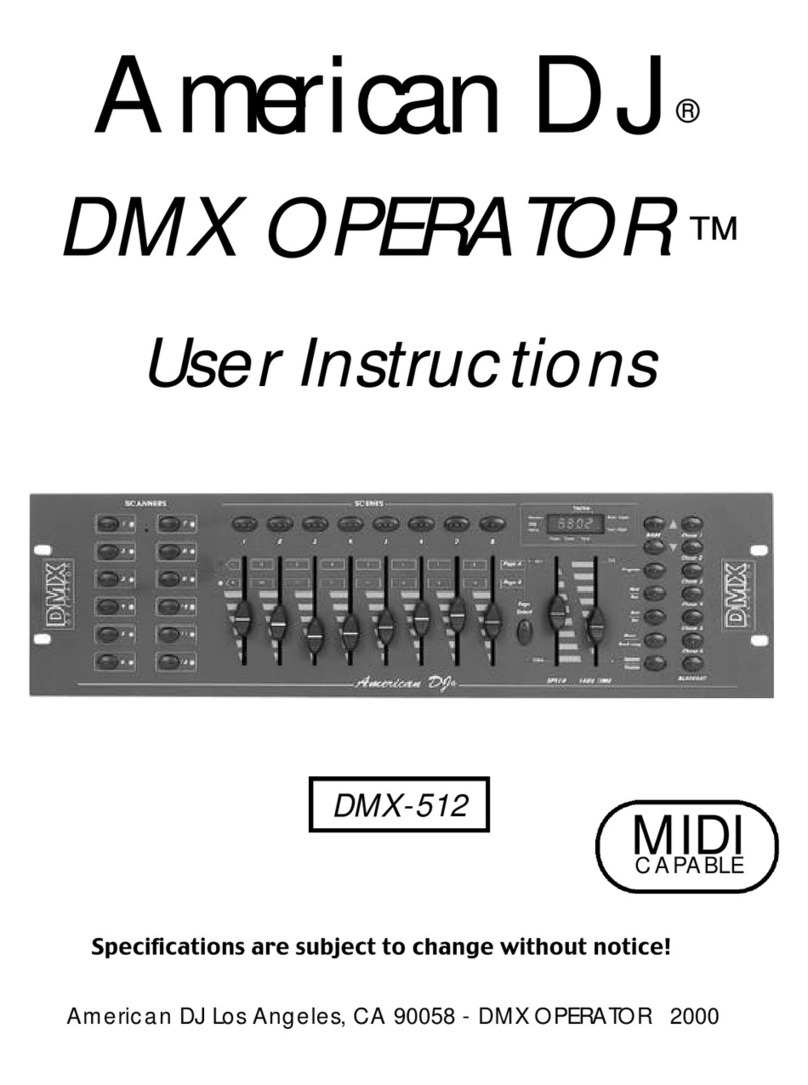
American DJ
American DJ DMX OPERATOR User instructions
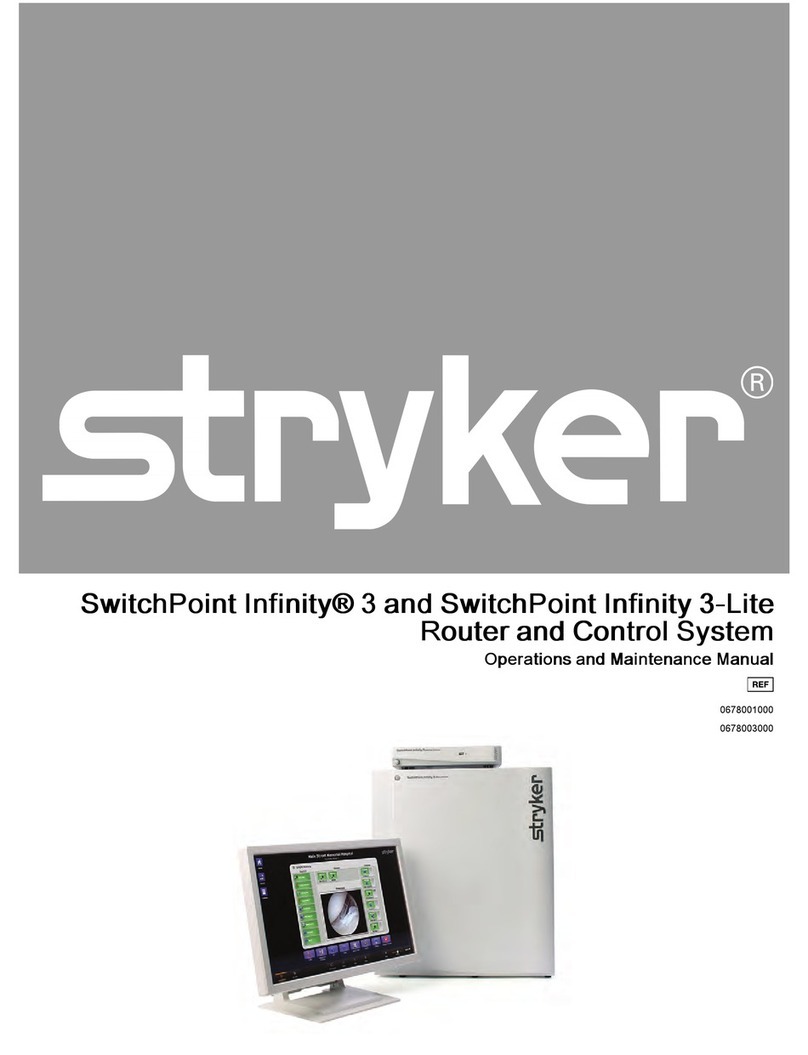
Stryker
Stryker SwitchPoint Infinity 3 Operation and maintenance manual
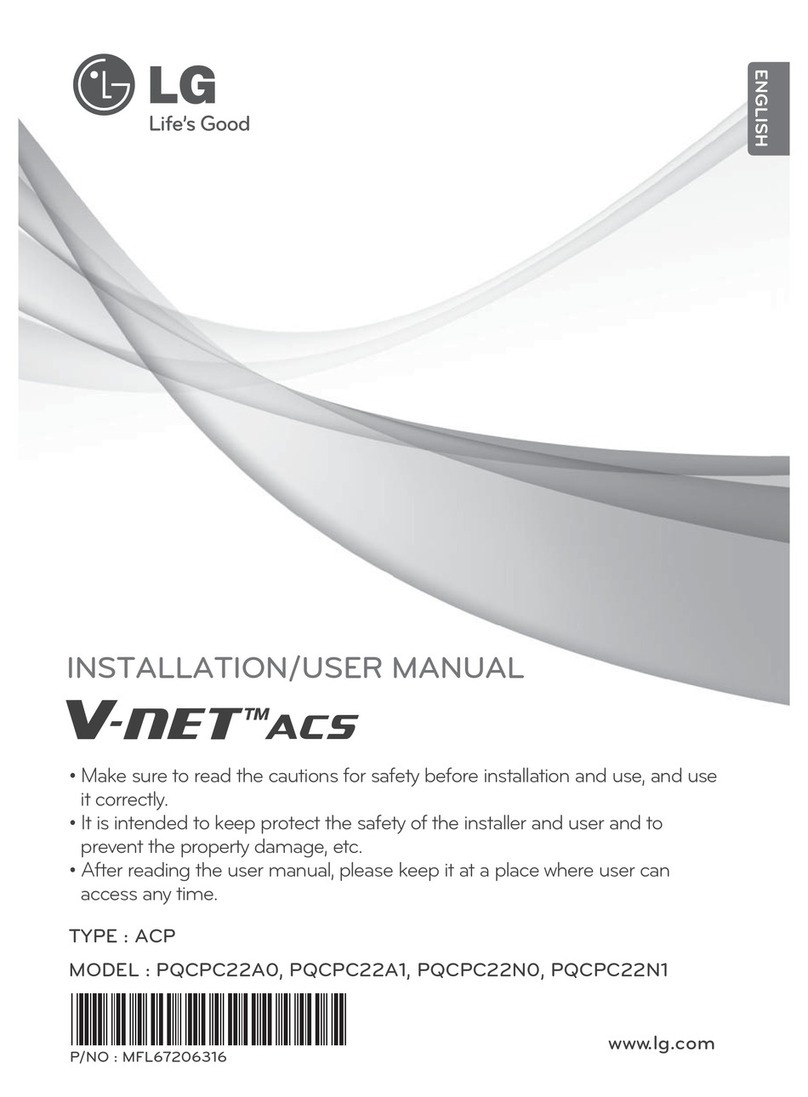
LG
LG V-NET PQCPC22N0 Installation & user manual

Dickey-John
Dickey-John Control Point Operator's manual

Mitsubishi Electric
Mitsubishi Electric AG-150A-A installation manual
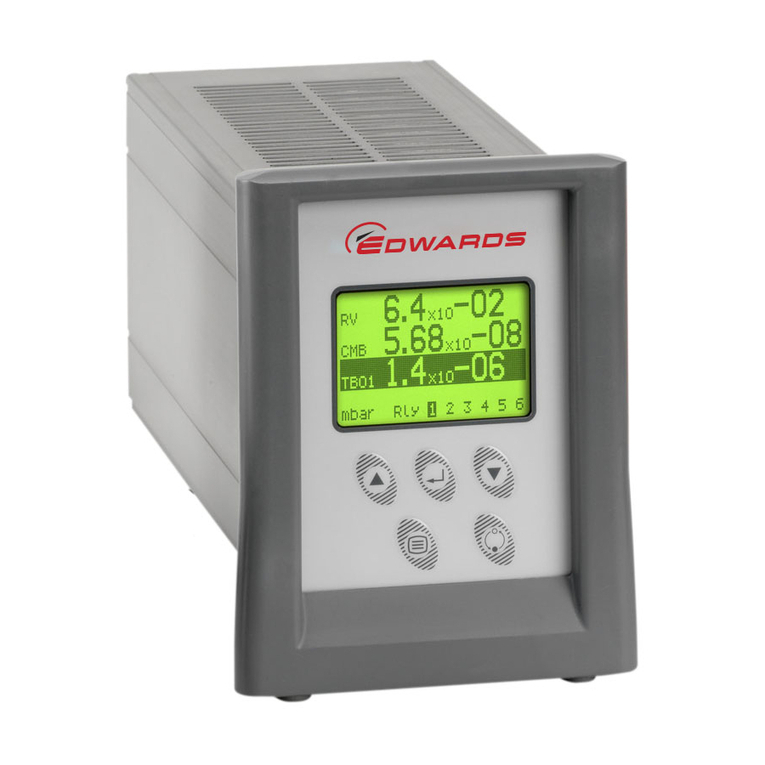
Edwards
Edwards D397-00-000 instruction manual

E.ON Energy Solutions
E.ON Energy Solutions EcoMeter user guide
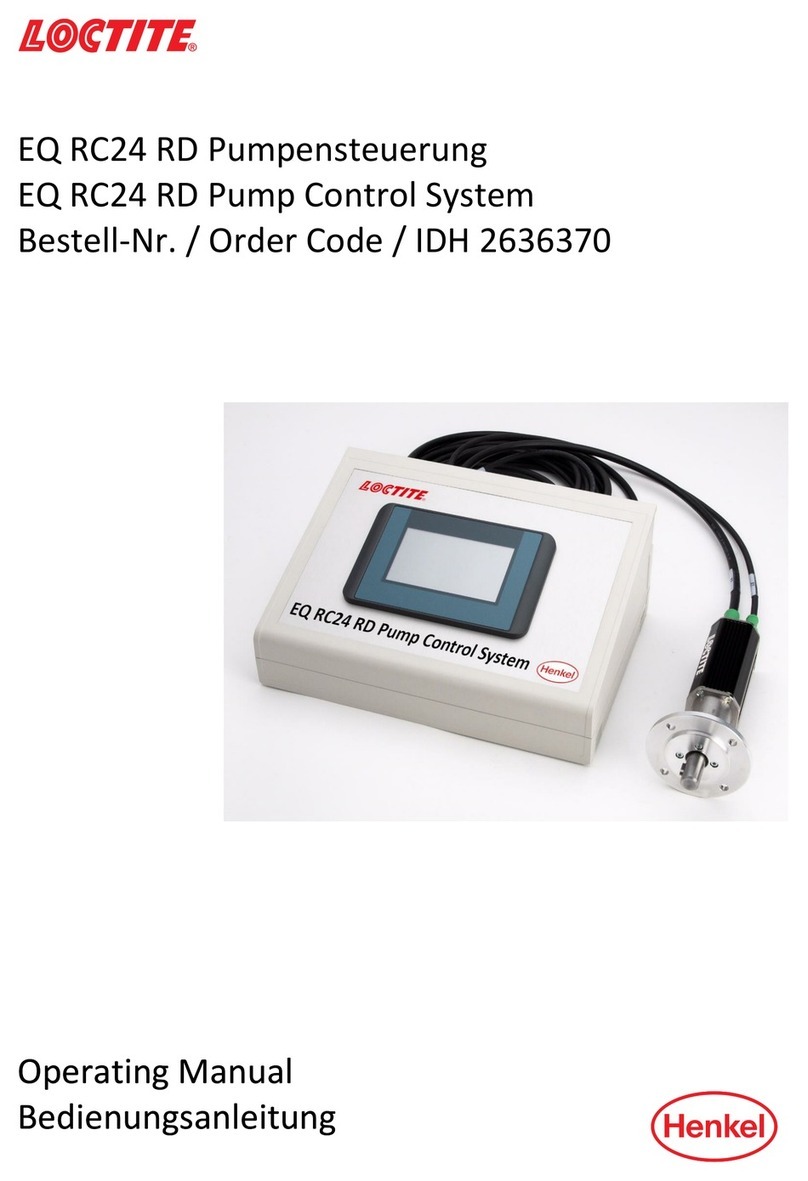
Loctite
Loctite EQ RC24 RD operating manual
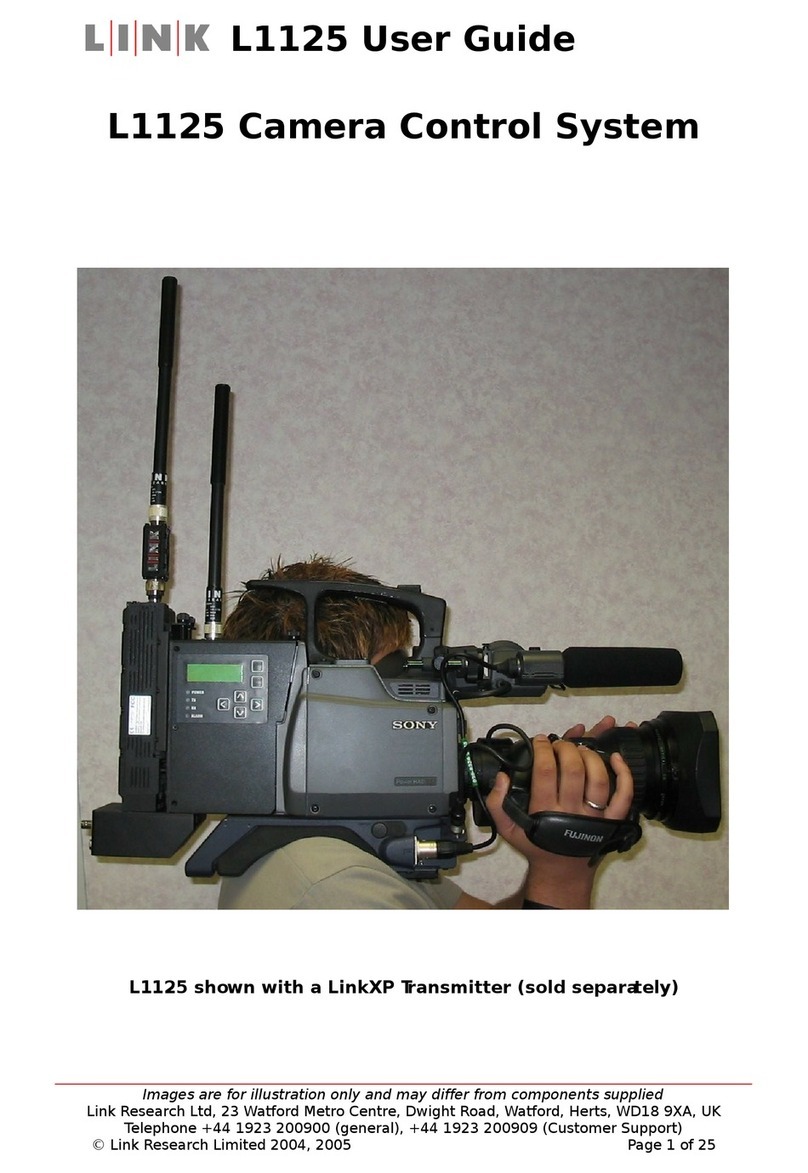
Link
Link L1125 user guide
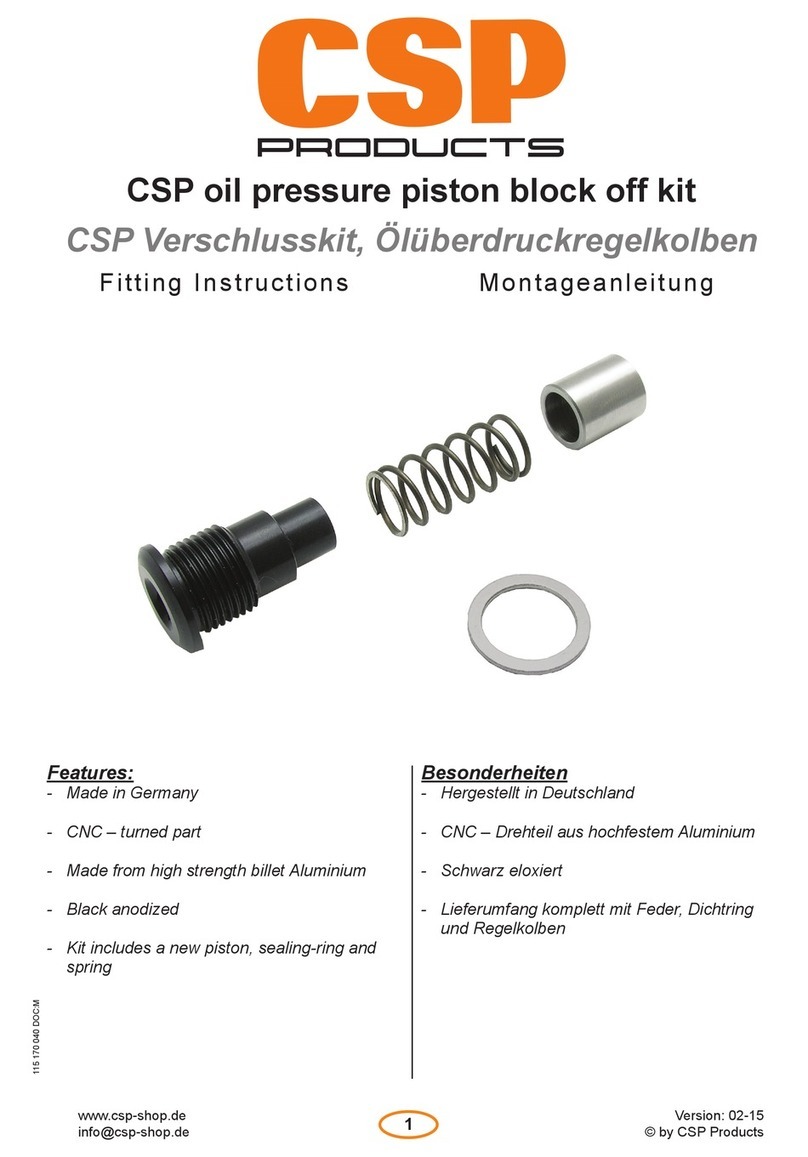
CSP Products
CSP Products 115 170 040 Fitting instructions

eqss
eqss OverWatch 6253 installation manual
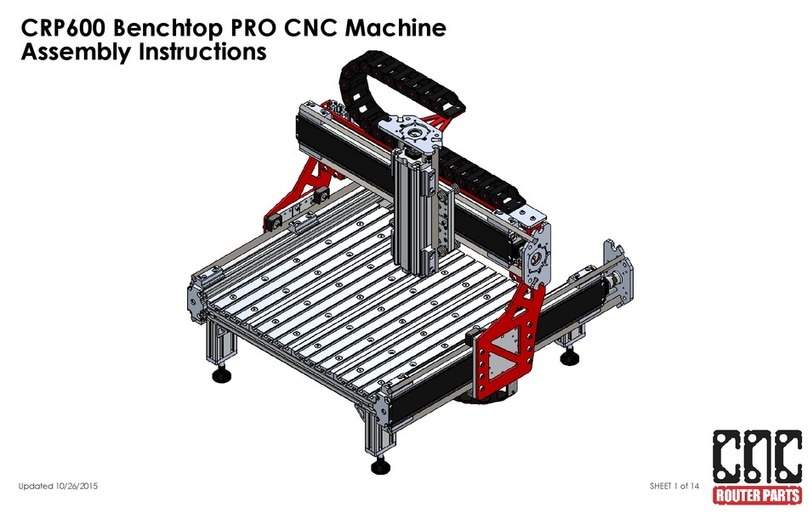
CNC Router Parts
CNC Router Parts CRP600 Benchtop PRO Assembly instructions
